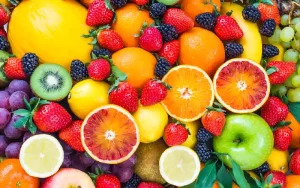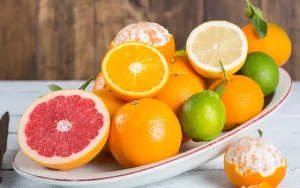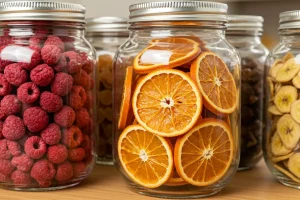Imagine a world where the food you eat is as fresh, tasty, and nutritious as if it had just been harvested. In order to make this real, it is vital to maintain food freshness from the raw material to the finished product. Here are the secrets to preserving its quality and flavor in every bite.
Key indicators of food freshness for producers
Producers must look at several indicators of organoleptic freshness, such as the aroma, the texture, and the flavor of foods to ensure that US goods are a benchmark of quality. All these elements are especially crucial for perishable foods such as fruits, vegetables, and dairy products.
Maintaining food freshness from start to finish
To achieve freshness from the raw material to the final product, some key recommendations are:
- Fresh ingredients. Choose ingredients such as natural fruit purees, made from freshly harvested fruit. Purees not only enhance the taste of the products, but also provide a variety of vitamins, antioxidants, and dietary fibre. So, by choosing these fresh supplies, you are ensuring the quality of your food.
- Proper handling. Good hygiene and housekeeping practices are essential to avoid contamination and preserve food freshness. Do not forget to wash your hands and utensils before handling food. Moreover, avoid cross-contamination by separating raw food from cooked food. These measures not only maintain the freshness of ingredients, but also protect the health of those who eat them.
- Proper storage. Be sure to keep food at the right temperature and humidity to preserve its freshness and quality. Store perishable products in cool, dry places, and keep food refrigerated when it is necessary. In addition, properly segregate functional food, non GMO foods and other kinds of food in designated areas or using separate containers.
Additional suggestions for maintaining quality
- Appropriate packaging. Use packaging that protects the product from light, air, and moisture. This prevents the loss of freshness and maintains the quality of the ingredients for longer. Consider using airtight containers for storing dry foods, such as cereals or flours, and vacuum packaging for fresh produce, such as fruits and vegetables.
- Food grading. This involves knowing the standards set for different types of foods, such as fruits, vegetables, meats, and dairy, and using the criteria to select the freshest and best quality products. By following these standards, you can ensure that you purchase ingredients that are at their peak of freshness. In addition, by properly categorizing food, you can optimize its storage and use. This reduces the waste and it maximizes food’s shelf life.
In summary, food freshness is a key factor in delivering quality products. By following these guidelines, you can be part of the movement that revolutionizes how food is purchased, processed, and consumed.
Bibliographic references:
- Ajmera, R. (2020, January 17). What Are Functional Foods? All You Need to Know. Healthline.
- Tapia, M., Alzamora, S., & Chirife, J. (2020). Effects of Water Activity (a w) on Microbial Stability as a Hurdle in Food Preservation. In G. Barbosa, A. Fontana, S. Schmidt & T. Labuza (Eds.), Water Activity in Foods: Fundamentals and Applications (pp. 323-355). Wiley.






